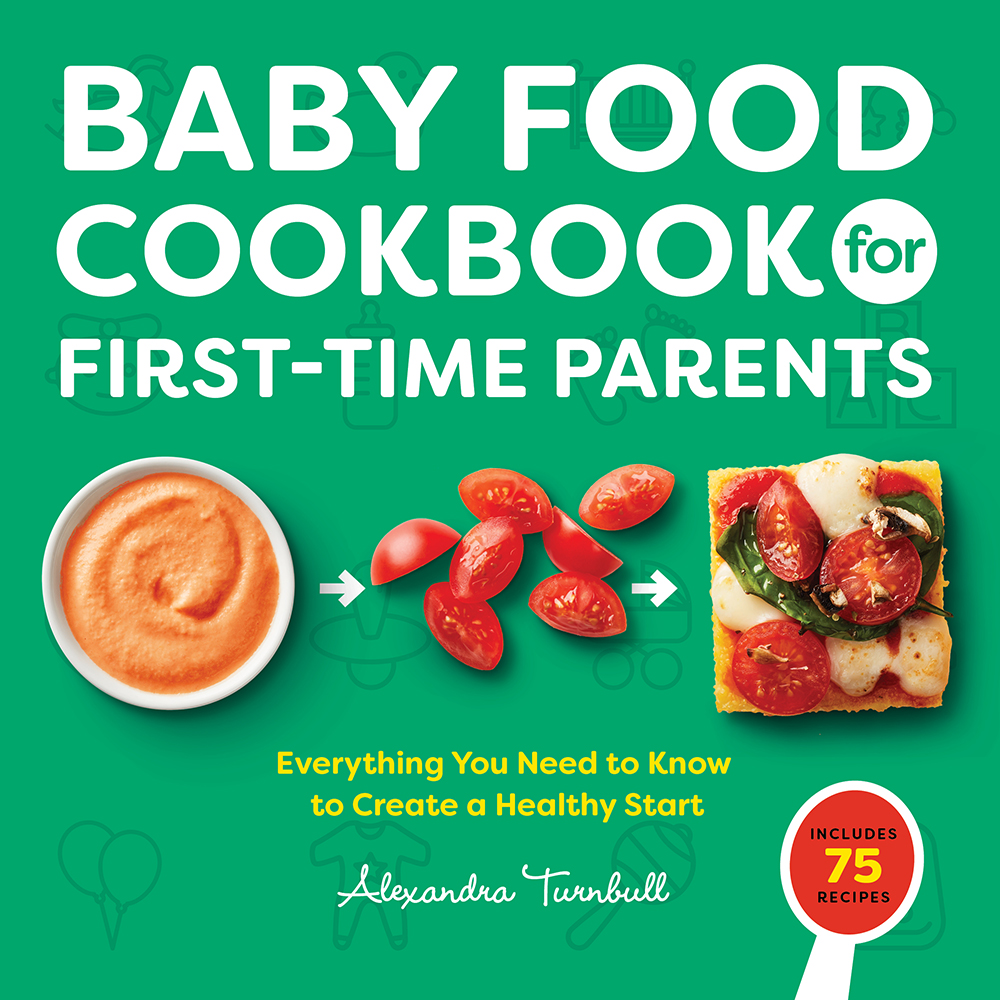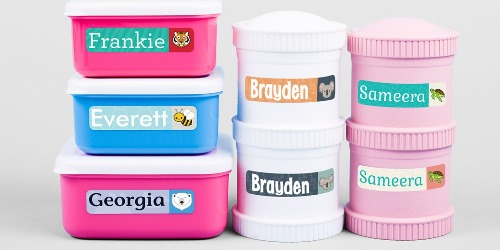
One child will die every five days from choking on food and over 12,000 children are taken to the emergency room every day from many of the top choking foods. If you want to avoid this for your child, you’re in the right place. Here you will learn five ways to help minimize the chance that your child chokes on food.
While you might think that your young child can handle eating the common choking hazards, it’s not a risk worth taking. You can ask any parent that has suffered the excruciating loss of a child due to choking on food. Keep reading to learn how to avoid this for you and your family.
If ever you have a concern that your child is choking, call 911 immediately.
Table of Contents
Gagging vs Choking
Like many parents, the idea of your child choking on food may be one of your biggest fears, but oftentimes parents don’t understand the difference between gagging vs choking.
Gagging
If your child is gagging, you will likely hear coughing sounds. Gagging is our body’s natural defense to choking and is an important part of learning how to manage solids when first starting and different textures as they continue to grow.
Choking
If your child is choking, food or an object is blocking their windpipe. Unlike gagging, choking is silent or high-pitched sounds. You may see your child grabbing at their neck or their stomach.
Now that you know the difference between gagging and choking, learn how you can help protect your child even more by taking these five simple and life-saving actions.
Learn more about choking vs gagging when introducing solids in my Into 2 Solids Playbook; a 30 plus page guidebook to help you learn everything you need to know to safely and confidently introduce solids to your baby.
You should highly consider taking this Choking Prevention and Response course through The Thrive Training Institute to better equip you on how to prevent choking emergencies in your home and know what to do in case of an emergency. Use code ALEX10 for $10 off!
Choking Prevention and Response Course
Prevent choking emergencies in your home
- Stop unsafe seating situations with the posture checklist proved to protect your child’s airway.
- Avoid dangerous household objects and modify choking risk foods to facilitate safe swallowing for infants, toddlers and school-age children.
- Troubleshoot feeding difficulties that can impact safe swallowing at mealtimes, such as pocketing, overstuffing and excessive gagging.
Know what to do in case of an emergency
- Learn infant and child Heimlich
- Learn infant and child CPR
1. TAKE A CPR COURSE
You are here because you want to know how your child can avoid choking on food, specifically the most common foods, but the reality is a child can choke on any food. Taking a CPR course can not only help equip you with the knowledge of how to save your child’s life, but it can also give you the confidence you need to stay calm throughout mealtimes when choking may be all you are worried about.
I recommend taking the Thrive Training Institutes CPR course where you can get certified in under an hour in the comfort of your own home and at your own pace. Use the discount code ALEX10 for $10 off.
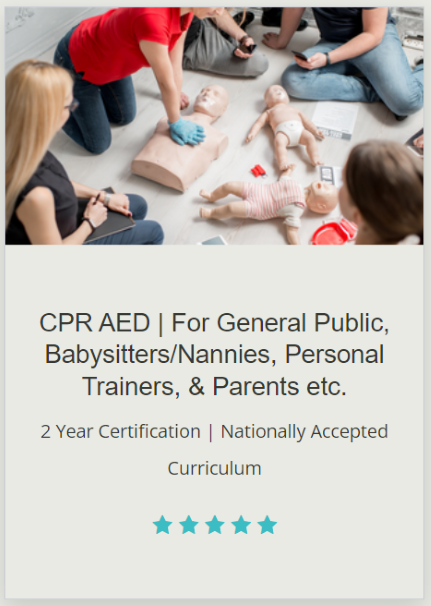
2. CREATE A CALM ENVIRONMENT
The environment in which your child eats can play a large role in the risk of choking. A chaotic and loud room with distractions is not ideal for mealtime for many reasons, but it can certainly create a more stressful situation that will only be to your disadvantage if your child accidentally chokes.
- Work towards eliminating distractions. If you normally have the TV on during mealtimes, try switching to calm music instead.
- Avoid letting your child run around while eating (easier said than done). It’s important to set boundaries around where food is eaten. The more consistent you are with this, the easier it will be over time.
- Stay calm. (insert deep breath here). If you’re stressed out, your child will likely feel the same way.
Make sure your child is sitting up, preferably in a high chair or other safe place depending on their age, not lying down, and avoid letting your child eat in a stroller or car seat if at all possible to work on preventing choking in infants and children.
For more information on proper seating, take the Thrive Training Institute’s Choking Prevention and Response course (ALEX10 for 10% off).
3. ALWAYS SUPERVISE MEALTIMES
While it might be tempting to sneak away and switch over a load of laundry, go check your phone, or start the clean-up that follows mealtime, it’s not worth it. Always supervise your children during mealtime. Choking can happen very quickly and the laundry, Instagram, and the dishes can all wait.
As always, call 911 and initiate infant or child CPR if choking does occur.
4. AVOID THE FINGER SWIPE OR THE BACK PAT
As tempting as it may be, avoid the temptation to swipe food out of your child’s mouth with your finger. At first, it may be the logical solution, but in reality, it can actually lodge the food further back into their throat, making the situation worse.
You should also avoid patting their back to try and help them. This can also lodge food further back instead of coughing it up. It sounds gross, but during mealtimes, allow your child to spit out food if they’re having a hard time or do not like it to help them develop an important skill to protect them in case of a choking incident.
Instead of using the discouraged finger swipe or back pat try this instead:
- Stay calm
- Let them work through trying to cough it up themselves
- Hold your hand out in front of their mouth to help them spit it out
- Encourage liquids and if necessary
- Call 911 and initiate infant or child CPR in needed
5. MODIFY FOODS
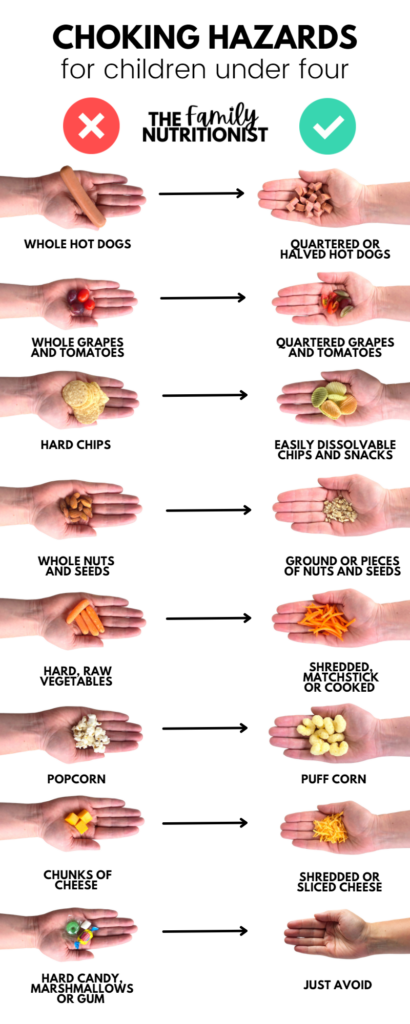
While modifying and avoiding common choking hazards can help prevent choking in infants, toddlers, and young children, it’s important for you to know that children can choke on any food.
Many foods are considered a choking hazard for children due to either their shape, texture, and how difficult they are to chew. Below are examples of how to modify some of the most common foods to prevent choking in infants, toddlers, and young children.
While there’s no magic age that your child can instantly and successfully manage to eat all foods without any risk of choking, these common hazards should be modified until at least age four. For a more in-depth list of common choking hazards by age, visit the CDC website or healthchildren.org
HOT DOGS

Many may argue that hot dogs are processed meats that children shouldn’t be eating in the first place, but the reality is that families still choose to eat this summertime favorite. Instead of offering whole hot dogs, quarter hot dogs to provide a safer option for your child to eat. Plus, it’s much more fun to dip bite-sized pieces into ketchup and mustard.
AVOID: hotdogs in their whole, round form.
MODIFY: quartered hot dogs.
GRAPES AND SMALL TOMATOES

Grapes and cherry or grape tomatoes are not only the perfect shape to make them a choking hazard, but they’re also slippery as heck. The slick and slippery peel of grapes and small tomato varieties may actually create more of a risk than their shape.
Don’t worry, you don’t need to peel every grape or tomato you feed your child. Instead, offer these slippery fruits and vegetables quartered to decrease the risk and skip the peeling.
AVOID: grapes and cherry or grape tomatoes in whole form.
MODIFY: quartered grapes and cherry or grape tomatoes.
HARD CHIPS
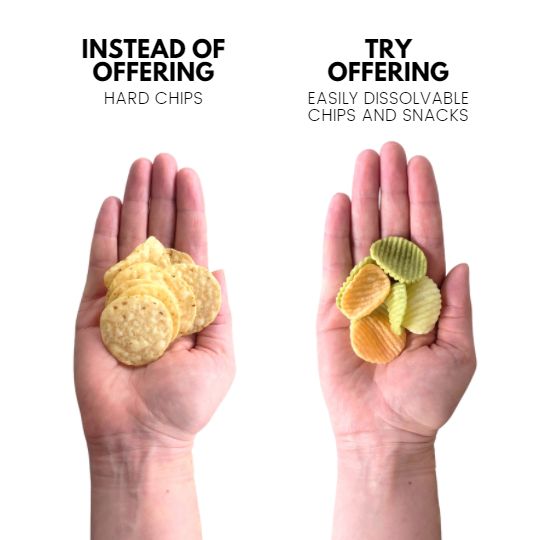
What qualifies as a “hard chip?” If you think it’s hard or breaks into sharp pieces, then it’s probably too hard for your child and not worth the risk.
Again, while many would say children shouldn’t have chips and other “snacky” items to start with, the reality is that they do. Instead of completely eliminating a food your family may enjoy eating, offer snacks that are easily dissolvable like puffs and veggie chips and straws (no these don’t count towards vegetable servings, but they can help bridge them to eventually enjoying veggies) and incorporate harder chips after the age of four, alongside a balanced diet.
AVOID: hard chips such as tortilla and potato chips and even pretzels.
MODIFY: dissolvable chips like veggie straws/chips, puffs, or pretzel sticks.
WHOLE NUTS AND SEEDS

Peanuts, tree nuts, and seeds are jam-packed with beneficial nutrients for your child, but they’re still a choking hazard. Instead of offering whole nuts and seeds, try grinding them or offering very small pieces. Seeds like chia and flaxseed are small enough to begin with and are not considered a choking hazard. However, I recommend offering flaxseed ground anyways, as it is more easily absorbed by the body this way.
AVOID: whole nuts and seeds.
MODIFY: ground nuts and seeds.
NUT OR SEED BUTTERS

Offering your child nut or seed butter is a great option and can be a good alternative to whole nuts and seeds, which are a choking hazard. However, you do want to avoid spreading nut or seed butter on too thick to avoid this also being a choking hazard. A thick and sticky glob of a nut or seed butter is not easy for anyone to swallow, let alone a busy body toddler who hasn’t yet gotten all their teeth, nor mastered chewing yet. Instead, just spread a thin layer to minimize the risk.
AVOID: thickly spread nut or seed butter.
MODIFY: thinly spread nut or seed butter.
CHUNKS OF CHEESE

Cheese; another nutrient-dense option that your child likely loves has made the choking hazard list. Have no fear, there are still plenty of ways to offer cheese safely to your child. Instead of large chunks that can be difficult to chew for your child, offer shredded or sliced to decrease any risk for choking.
AVOID: chunks or string cheese in whole form.
MODIFY: shredded cheese, sliced cheese or quartered string cheese.
POPCORN

Family movie nights are a great way to build memories, but until your child is four, opt for a safer option such as puff corn or puffs. Don’t worry, they will get to enjoy popcorn for many years once they can safely manage it. It’s better to be safe than sorry, even on family movie nights.
AVOID: regular popcorn.
MODIFY: puff corn.
HARD, RAW FRUITS & VEGETABLES

Vegetables are always highly encouraged, yet most likely a hard sell for your picky toddler. One reason why vegetables may not be your child’s favorite food is that they can be a lot of work to eat. This is also what makes them a choking hazard.
Baby carrots tend to be the called out choking hazard in the vegetable category and this is because of their rounded, tube-like shape that can easily block your child’s airway. When offering hard, raw veggies under the age of four, try shredding or cutting into thin, matchstick slices to make the chewing process easier and decrease the choking risk. The even safer option would be offering cooked, but it’s always good to offer foods in a variety of different ways – cooked carrots do not taste the same as raw.
AVOID: Hard, raw vegetables such as baby carrots and apples.
MODIFY: shredded, thinkly sliced or matchstick versions of hard, raw fruits and veggies or cooked varieties.
HARD CANDY, MARSHMALLOWS OR GUM

Hard candy, marshmallows, and gum all have two things in common; they are choking hazards and contain added sugar. These are two important reasons to avoid the hard, sticky categories of candy as long as you can.
It’s likely your child may be offered these by other adults and it’s not that they are trying to harm your child. They may simply not be informed of common choking hazards for children. Calmly explain to them and your child that these aren’t safe to eat and hopefully you have an alternative somewhere in the vicinity to curb the meltdown that’s about to occur in 3…2…1.
You can of course offer different varieties of candies, but because there are so many different options and tend to be one of the more common sources of added sugar, avoid it if possible altogether.
AVOID: hard candy, marshmallows or gum.
MODIFY: avoid altogether if possible, but if necessary, opt for softer candies like chocolate.
At the end of the day, you won’t be able to avoid every single choking hazard, but remember to have as many of these five suggestions on your side as possible to help prevent choking in your infant, toddler, or young child.
- Take a Choking Prevention and Response or CPR course to help your understand how to not only prevent choking in your infant, toddler or child, but how to respond when it matters most. Code ALEX10 for 10% off.
- Create a calm environment where distractions and stress levels are minimized.
- Always supervise mealtimes no matter what is on your to-do list.
- Avoid the finger swipe or back pat that can just make matters worse.
- Modify common choking hazards whenever possible


